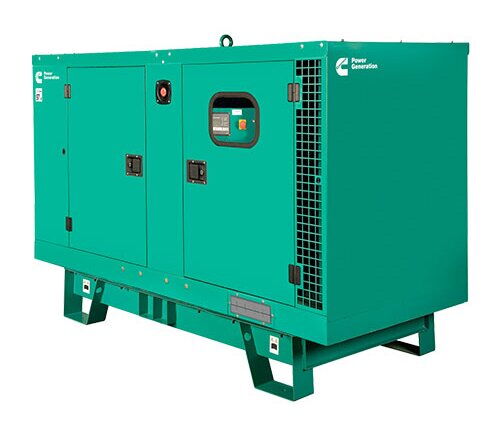Major Differences between Containerized and Silent Generators
On this page
Generators play a crucial role in modern energy systems. Depending on their design characteristics and application needs, different types of generators serve unique purposes in their respective fields. This article provides a detailed comparison between containerized generators and silent generators to help users select the most suitable power solution based on specific requirements.
Containerized generators have become a popular choice in modern power solutions due to their flexibility and efficiency. Their design allows for quick adaptation to different environments, providing stable power support. Ideal for temporary facilities, remote areas, and emergency backup power, containerized generators excel in high power output and environmental friendliness, while also offering good economic value and low operating costs.

Containerized generators feature a standard container structure, typically with corrugated panels. This design not only enhances the strength of the container but also provides additional protection. These generators can house large power equipment and offer extra space for additional features such as worker rest areas or air conditioning facilities.
The modular and portable nature of containerized generators allows them to be rapidly deployed in various environments. They provide reliable power supply in temporary setups, remote locations, or emergency situations. Their design enables them to handle diverse environmental conditions, including extreme temperatures and high altitudes.
With advanced engine technology, containerized generators deliver high power output while maintaining efficient operation. This efficiency reduces energy loss and improves overall economic performance.
Containerized generators significantly reduce carbon emissions during operation. Compared to traditional large power plants, they have a smaller environmental footprint and meet modern environmental standards, contributing to a reduced ecological impact.
The initial investment and operating costs of containerized generators are relatively low. Their economical and practical features make them a preferred choice for many users, especially when budget constraints are a concern.
Structural Strength: Although containerized generators have high strength ratings, the relatively higher cost may be a concern for some users.
Maintenance and Repairs: The complex structure can make maintenance and repairs more challenging, especially in case of faults.
Silent generators are renowned for their superior noise reduction capabilities and compact design. They are especially suited for locations requiring low noise and high stability. With advanced soundproofing materials and designs, these generators effectively reduce operational noise. The modular design of silent generators also makes maintenance and transportation more convenient. Their robust structure and high-performance materials ensure long-term reliability, making them an ideal choice for scenarios where quiet and stable power supply is crucial.

Silent generators feature a compact design, typically constructed with flat cold-rolled steel plates. The design focuses on noise control, with multiple layers of barrier materials and large silencer units to effectively reduce noise levels during operation.
Utilizing high-performance soundproofing materials and noise reduction devices, silent generators significantly lower operational noise. They offer standard models with noise levels below 75 decibels or ultra-silent models below 65 decibels, meeting international and military standards.
The modular design of silent generators makes maintenance and repairs more straightforward. Faulty components can be quickly identified and replaced, reducing maintenance costs and time. The modular design also enhances flexibility in transportation and installation.
The outer shell of silent generators is typically made from high-performance carbon steel with high-temperature casting treatment to enhance rust resistance. The design includes large-capacity fuel tanks and can be customized based on user needs, including air intake direction and tank size.
Space and Structure: The flat structure of silent generators may not offer the same strength and longevity as containerized generators.
Cost: While the initial investment cost is lower, the complexity of the structure and long-term maintenance may incur additional costs.
Both containerized and silent generators exhibit excellent environmental adaptability, ensuring stable operation in various harsh conditions. Their compact design and ease of operation make installation and maintenance more efficient. Both types provide powerful support in limited spaces while reducing construction and operational costs.
Environmental Adaptability: Both types are suitable for outdoor and remote fixed locations, offering protection against rain, snow, and sand. They can operate reliably in high altitudes, extreme temperatures, and cold environments, meeting diverse environmental requirements.
Ease of Operation: Both generator types are user-friendly, with small footprints and no need for dedicated generator rooms, reducing overall construction and operational costs.
Compact Structure: The compact design of both generator types helps minimize space usage and improves overall efficiency.
Containerized and silent generators each have distinct advantages, suited to different scenarios and needs. Containerized generators are widely used for their flexibility, efficiency, and environmental benefits, making them ideal for various environments and emergency situations. Silent generators, with their low noise, excellent structural design, and modular assembly, excel in settings where noise control and stability are crucial. Users should consider specific needs, such as environmental adaptability, noise control, and maintenance costs, to select the most appropriate power solution.
